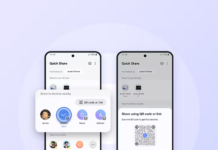Samsung’s Galaxy S20 was a groundbreaking release in early 2020, offering cutting-edge features like a 120Hz display, 5G connectivity, and a powerful camera array. Despite its premium hardware, users continue to encounter one frustrating issue—the dreaded “Software Update Failed” error when trying to install updates.
Software updates are critical for maintaining performance, security, and introducing new features. However, failing to install updates can disrupt the user experience, leave your device vulnerable to threats, and, in some cases, even slow down your phone over time. In this guide, we’ll dive deep into why this issue occurs and walk you through the steps to resolve it, ensuring your Galaxy S20 stays up-to-date and optimized.
The “Software Update Failed” Error: Why Does It Happen?
The “Software Update Failed” error isn’t unique to the Galaxy S20, but it has become a common frustration among users of this particular model. Several factors can cause an update failure, ranging from software conflicts to insufficient storage. Here are the most frequent culprits:
- If your Wi-Fi or mobile data connection is unstable or too slow, the update process can be interrupted or corrupted.
- Samsung’s Galaxy S20 requires significant storage space for installing system updates. If your device is low on space, the update won’t be able to proceed.
- Samsung’s updates typically won’t proceed unless your battery is above a certain threshold, usually around 50%, to prevent the phone from dying mid-update.
- Sometimes, the error is out of your control and resides on Samsung’s servers. When too many users attempt to download the update simultaneously, server overload can cause failed downloads or incomplete installations.
- Any malfunctioning app, corrupt cache, or system glitch could interfere with a smooth update process, triggering the “Software Update Failed” error.
- Not all updates are rolled out simultaneously across the globe. If your region hasn’t been fully supported yet, an error may occur if you attempt to force an update early.
How to Fix the “Software Update Failed” Error on the Samsung Galaxy S20
Now that we understand some of the common causes behind the error, let’s get into solutions. These steps range from basic to advanced troubleshooting techniques, ensuring you can resolve the issue no matter the root cause.
1. Check Your Wi-Fi or Mobile Data Connection
Before anything else, ensure that your Galaxy S20 is connected to a strong, stable internet connection. Software updates require a reliable network to download and install without interruptions. Here’s how to stabilize your connection:
- Use a Stable Wi-Fi: Switch from mobile data to a high-speed Wi-Fi connection to ensure the update downloads properly.
- Turn Airplane Mode On and Off: Toggling Airplane Mode can sometimes reset the network settings and resolve minor connectivity issues.
- Restart the Router: If your Wi-Fi is acting sluggish, reboot your router to refresh the connection. Alternatively, switch to a mobile data connection if Wi-Fi is unreliable.
2. Free Up Storage Space
Your Galaxy S20 needs sufficient storage space to install updates, especially the large ones. If your storage is whole, the update may fail. Here’s how to check and free up space:
- Check Available Storage:
- Go to Settings > Device Care> Storage.
- Ensure you have at least 3-5 GB of free space for the update.
- Delete Unused Apps: Identify apps you no longer use and uninstall them.
- Clear Cache: Temporary files can eat up storage. Go to Settings > Apps > Select an app > Storage > Clear Cache to free up space.
- Move Files to the Cloud or External Storage: Transfer photos, videos, or large files to a cloud service like Google Drive or an external microSD card to free up internal storage.
3. Charge Your Battery to Above 50%
If your battery level is too low, the update will not initiate, or worse, it might fail mid-process. Always make sure your device is sufficiently charged:
- Charge Your Phone: Make sure your battery is charged to at least 50%, or connect your phone to a charger during the update process.
4. Restart Your Device
Sometimes a simple reboot can fix software conflicts or background issues that are interfering with the update. Restarting your phone will refresh system resources:
- Restart the Galaxy S20:
- Press and hold the Power Button and select Restart.
- After the device restarts, go to Settings > Software Update > Download and Install and try the update again.
5. Clear Cache Partition
A corrupt system cache can prevent software updates from installing correctly. Clearing the cache partition won’t delete your data, but it will remove temporary files that may be causing issues:
- Steps to Clear Cache Partition:
- Turn off your Galaxy S20.
- Press and hold the Volume Up and Bixby/Power buttons until the Android logo appears.
- Use the Volume buttons to navigate to Wipe Cache Partition and press the Power button to select.
- Confirm by selecting Yes and wait for the process to complete.
- After the cache partition is wiped, select Reboot System Now.
6. Use Smart Switch to Manually Update
If the update still fails, Samsung’s Smart Switch software offers an alternative method to install the update manually. Here’s how to do it:
- Download and install Smart Switch on your computer (Windows or Mac).
- Connect your Galaxy S20 to your computer using a USB cable.
- Open Smart Switch, and if an update is available, you’ll see an option to install it directly from the application.
This method bypasses potential on-device issues, providing a direct path to download and install the update via your computer.
7. Perform a Factory Reset (Last Resort)
If all else fails, performing a factory reset can resolve deeper system-level issues causing the error. However, this will erase all data on your device, so back up your data before proceeding:
- Factory Reset Your Galaxy S20:
- Go to Settings > General Management > Reset > Factory Data Reset.
- After resetting, set up your device and attempt the update again.
Final Thoughts: Keeping Your Galaxy S20 Running Smoothly
The “Software Update Failed” error on the Samsung Galaxy S20 can be frustrating, but it’s often resolvable with a few targeted troubleshooting steps. From ensuring a stable internet connection to freeing up storage and clearing the cache, most users should be able to overcome this issue without needing to resort to more drastic measures like a factory reset. If the error persists, you can seek help from the Samsung official forums.
Samsung’s commitment to ongoing software updates means staying on top of patches is crucial for getting the most out of your device. Regular updates not only keep your Galaxy S20 secure but also ensure optimal performance, new features, and longevity for the life of the phone. By following the steps outlined above, you’ll be back to updating and optimizing in no time.

















